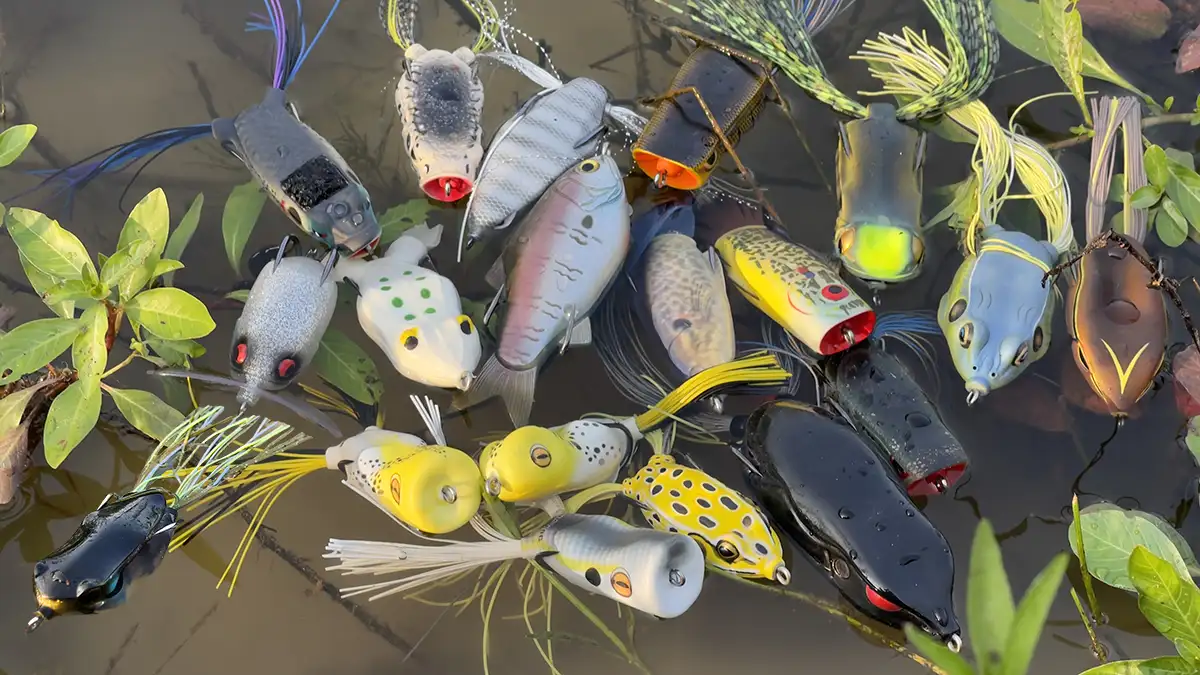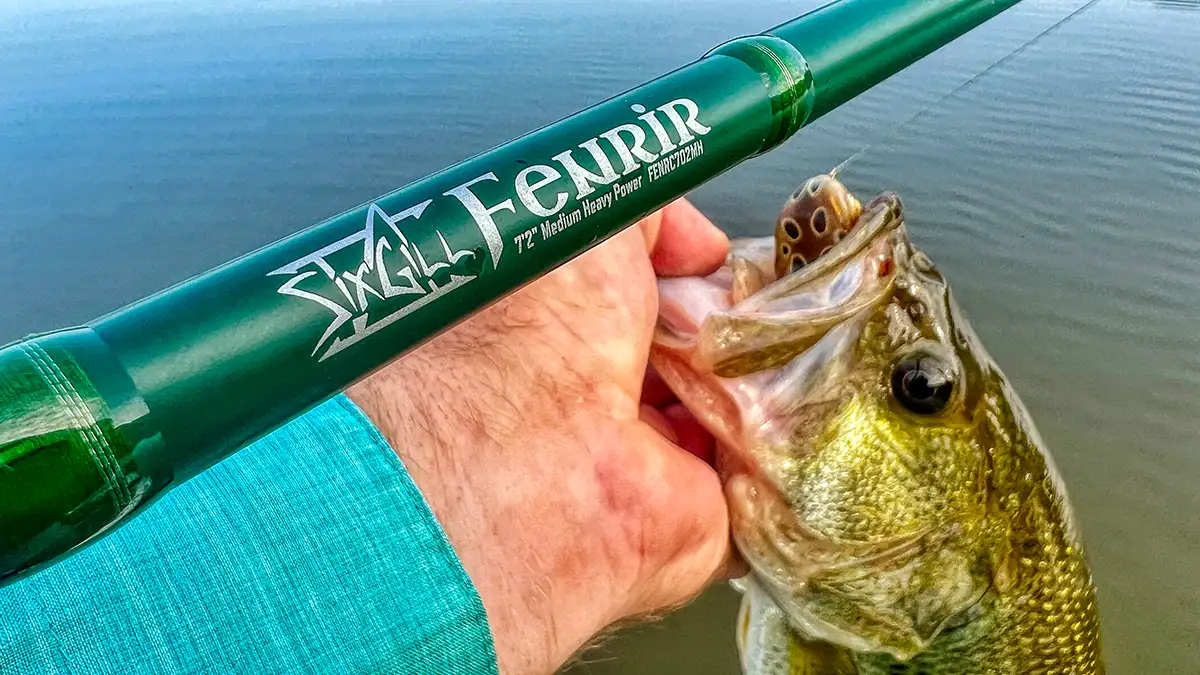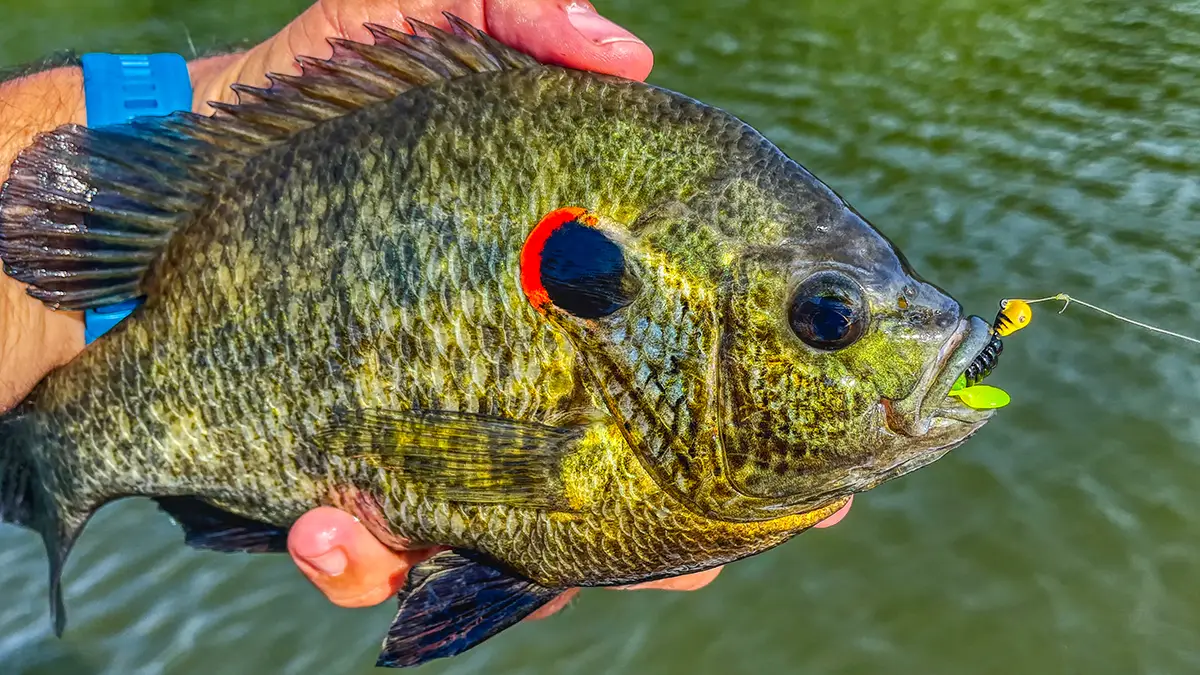The Booyah Pad Crasher is widely regarded as one of the most popular hollow-bodied frogs of all time. When fishing around vegetation or heavy cover, the Booyah Pad Crasher is always a good choice. This frog comes in both the normal Pad Crasher version, as well as the Poppin Pad Crasher version. Both versions are great for a number of different scenarios, however there are a couple features on this frog that helps it stand out from the crowd.
BUILD
The Booyah Pad Crasher measures 2-1/2 inches in length and weighs around a 1/2-ounce. This is the perfect sized frog to allow for great castability while still maintaining a small enough profile to get tons of bites. This frog also comes with a super soft body. This allows the bait to collapse and expose the hooks when a fish engulfs the frog. This leads to a far greater hook-up ratio as opposed to frogs with a harder body. The hooks also stick up slightly above the frogs body, allowing it to catch the roof of the fish’s mouth as it grazes over the top of the frog.
This super soft body also allows this frog to skip exceedingly well under docks or overhangs. This is a super important feature because you oftentimes get the most bites deep into cover or shade where big bass tend to reside. Both the Pad Crasher and the Poppin Pad Crasher come with a V-shaped body style.
This allows the frog to maneuver through vegetation and cover without getting hung. This is super important for adequately fishing your frog around heavy cover where you oftentimes get the majority of your bites. While heavy cover is always a great place to fish this frog, these aren’t the only areas this lure excels in.

FISHING THE PAD CRASHER
Once it starts getting into the late summer months is when I really like to start throwing around a frog. Fish seem to really key in on bluegill this time of year, especially when a mayfly hatch Is going on. This is my absolute favorite time to throw a frog.
When mayflies start to hatch, bluegill will typically group up under overhangs or docks where they can prey on the insects to fall down into the water. This causes the bass to group up in these areas as well to feed on bluegill. This is the perfect time to skip a frog under these pieces of cover in order to imitate bluegill feeding on these floating insects.
This past week, I went out on my local body of water to throw a Pad Crasher. I targeted channel swing banks with overhangs where the mayflies were hatching. The channel swing banks had tons of bluegill that were taking advantage of this easy meal. We proceeded to catch numerous 2-pound fish along with a couple bass pushing the 5-pound mark. We were able to run this pattern all over the lake and catch tons of fish targeting these mayfly hatches.
Another scenario I like to throw a frog in this time of year is around matted vegetation. When the water warms up, fish will often use this vegetation in order to cool down and find cleaner, more comfortable water. Bluegill also tend to use this vegetation to feed on both mayflies and other types of forage. This is a great place to fish a frog in order to call these big bass out of the matted vegetation. When fishing around these types of cover, it is important to have the right setup in order to successfully winch these fish into the boat.

IDEAL SETUP FOR THE PAD CRASHER
When fishing a frog it is super important to have the right rod, reel and line combination. Oftentimes you don’t get many bites on a frog, however the bites you do get tend to be big. This is why it is important to have a dedicated setup to fishing this style of bait. I like to use a heavier rod that’s still short enough to make accurate casts around heavy cover. I tend to go for a rod that’s anywhere from 7 feet to 7 feet, 2 inches long. This allows you to make accurate casts while still having enough leverage over the fish to deliver a good hookset.
I like a heavy or extra-heavy action rod in order to penetrate the hooks into the fish’s mouth with ease. This allows for a better hookup ratio and allows you to pull them out of heavy vegetation or cover. I opt for the extra heavy when fishing around matted vegetation that the fish could use to wrap up, and I go for the heavy when fishing around docks or laydowns. My go to rod for the Booyah Pad Crasher in the majority of scenarios is a 7-foot, 2-inch heavy Shimano Expride B.
For a reel, I prefer one with a faster gear ratio and a decent sized spool. I like the faster gear ratio because it allows me to quickly wind the fish into the boat before they have the chance to come off. A frog is known for having a bad landing ratio, so it is super important to be able to quickly get those fish to the boat before they have the chance to jump. I also like a bigger sized spool because it allows me to hold lots of heavy braid.
This larger sized reel also gives you a bigger real handle, which makes it easier to control the reel when fighting them to the boat. My go to reel for fishing a Booyah Pad Crasher is the 150 MGL Shimano Curado in the 8:1 gear ratio.
As far as line goes, I tend to stick with either 65 or 50-pound braided line. Braid has zero stretch which allows you to get maximum force when setting the hook on a fish and pulling him out of cover. I like to go with the 65-pound line when I’m fishing around matted vegetation such as hydrilla or hyacinth.
Fish tend to pull you into the grass and wrap you up after getting hooked, this added line strength allows you to pull them out without fear of breaking off. I then opt for the 50-pound line when fishing around hard cover such as laydowns or docks. This lighter line allows you to make longer and more accurate casts which is important when fishing around target oriented cover.
Throwing a Booyah Pad Crasher or Popping Pad Crasher in the late summer is a great way to get some big bites. This is especially true when the mayflies are hatching and the bass are keying in on bluegill feeding on these insects. Throwing a Booyah Pad Crasher around these mayfly hatches is a sure fire way to have a fun day out on the water and get some quality bites.
You can purchase this produce from these online retailers:

















